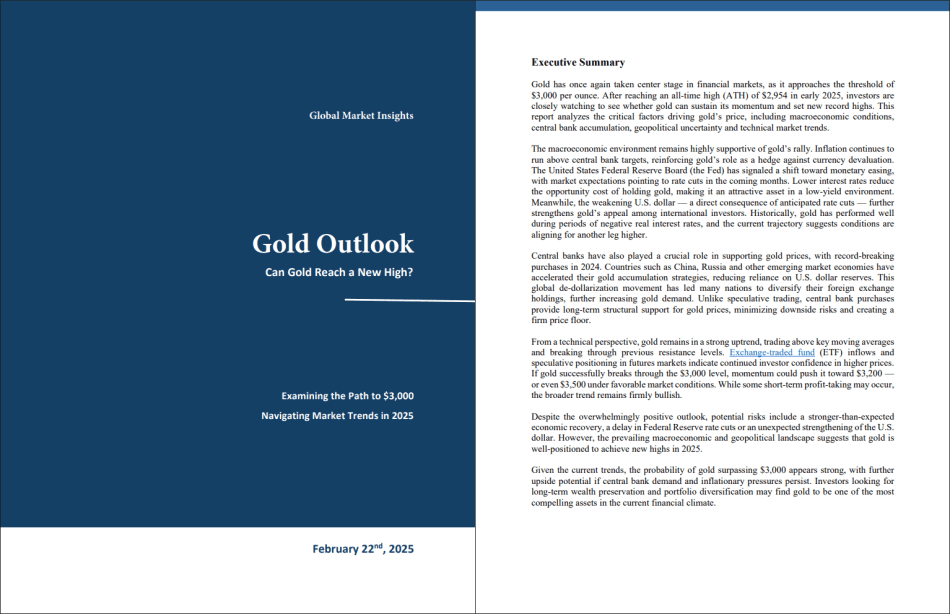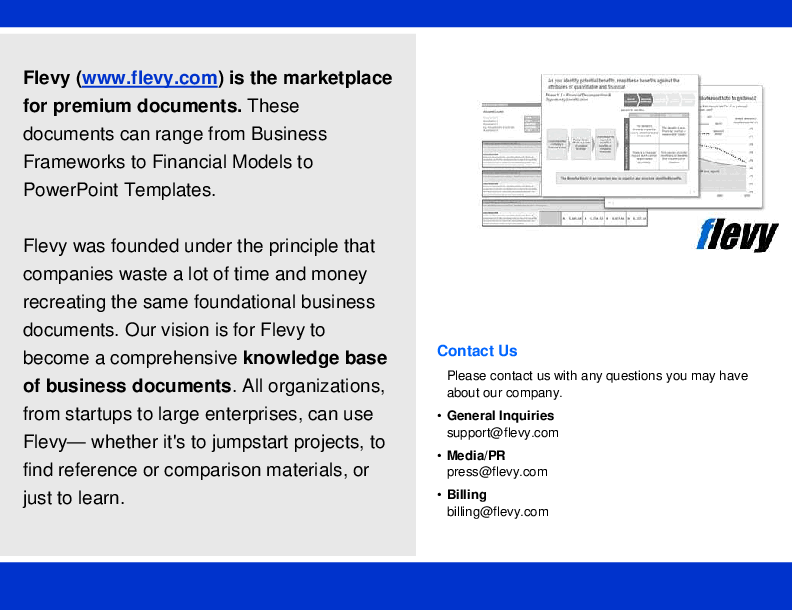Gold Outlook 2025 (PDF)
PDF document 35 Pages
BENEFITS OF THIS PDF DOCUMENT
- Delivers a comprehensive analysis of macroeconomic, geopolitical, and market forces shaping gold price movements in 2025.
- Equips investors with actionable strategies for navigating potential volatility and identifying profitable entry and exit points.
- Integrates technical, fundamental, and sentiment-based indicators to provide a balanced, forward-looking investment outlook.
MACROECONOMICS PDF DESCRIPTION
This report provides an in-depth analysis of the gold market's trajectory in 2025, exploring the critical question: Can gold reach a new all-time high and potentially cross the $3,000 mark? Drawing on macroeconomic data, historical price patterns, and emerging global market signals, the report delivers actionable insights for investors, analysts, and decision-makers navigating the evolving precious metals landscape.
The analysis begins with a macroeconomic overview, examining the impact of interest rate cycles, inflationary pressures, and shifts in central bank policies on gold prices. Special attention is given to the role of geopolitical tensions, currency fluctuations, and global trade dynamics, all of which contribute to gold's safe-haven appeal.
The report then delves into supply-side considerations, including mining production trends, exploration investments, and the influence of ESG (Environmental, Social, and Governance) factors on gold extraction and processing. On the demand side, it assesses the growing importance of central bank purchases, ETF inflows, and the expanding role of gold in wealth preservation strategies across both developed and emerging markets.
A key section of the report evaluates technical indicators and market sentiment metrics, mapping potential price scenarios for 2025. By integrating quantitative modeling with qualitative market intelligence, the analysis identifies both bullish and bearish catalysts, providing a balanced view of potential risks and opportunities.
Investors will also benefit from insights into gold's correlation with other major asset classes, including equities, bonds, and cryptocurrencies, offering a comprehensive perspective for portfolio diversification. The report concludes with strategic recommendations tailored to different investor profiles – from short-term traders seeking momentum plays to long-term holders focused on capital preservation.
Whether you are a professional portfolio manager, a private investor, or a market strategist, this report serves as a valuable resource for making informed, confident decisions in the gold market. With its combination of detailed market research, forward-looking projections, and practical investment guidance, it equips readers with the tools needed to navigate 2025's dynamic gold environment.
Got a question about the product? Email us at support@flevy.com or ask the author directly by using the "Ask the Author a Question" form. If you cannot view the preview above this document description, go here to view the large preview instead.
Source: Best Practices in Macroeconomics PDF: Gold Outlook 2025 PDF (PDF) Document, Hunter Hughes






